Abstract
Kanie, Matuso (Kagoshima University, Kagoshima, Japan), Shigeo Fujimoto, and J. W. Foster. Chemical degradation of dipicolinic acid-C14 and its application to biosynthesis by Penicillium citreo-viride. J. Bacteriol. 91:570–577. 1966.—A chemical degradation of dipicolinic acid-C14 has been worked out, enabling determination of the specific radioactivity of the carboxyl-carbons (carbons-7 and -8), and of the following carbons of the pyridine ring: carbons-2 and -6 combined, carbons-3 and -5 combined, and carbon-4. The degradation was applied to dipicolinic acid synthesized by washed, submerged mycelium of the mold from glucose and C14O2, and from glucose-1-C14, -2-C14, and -6-C14. The distribution of radioactivity within the labeled dipicolinic acids is consistent with operation of respiratory cycles and with the incorporation of one molecule of CO2 in the pyridine acid. A C3 compound is a primary building block. The C7 chain is believed to result from a C3 plus C4 condensation, pyruvic acid and aspartic acid β-semialdehyde being proposed as likely precursors. Other aspects of the biosynthesis of C7 open-chain compounds and of dipicolinic acid are discussed.
Full text
PDF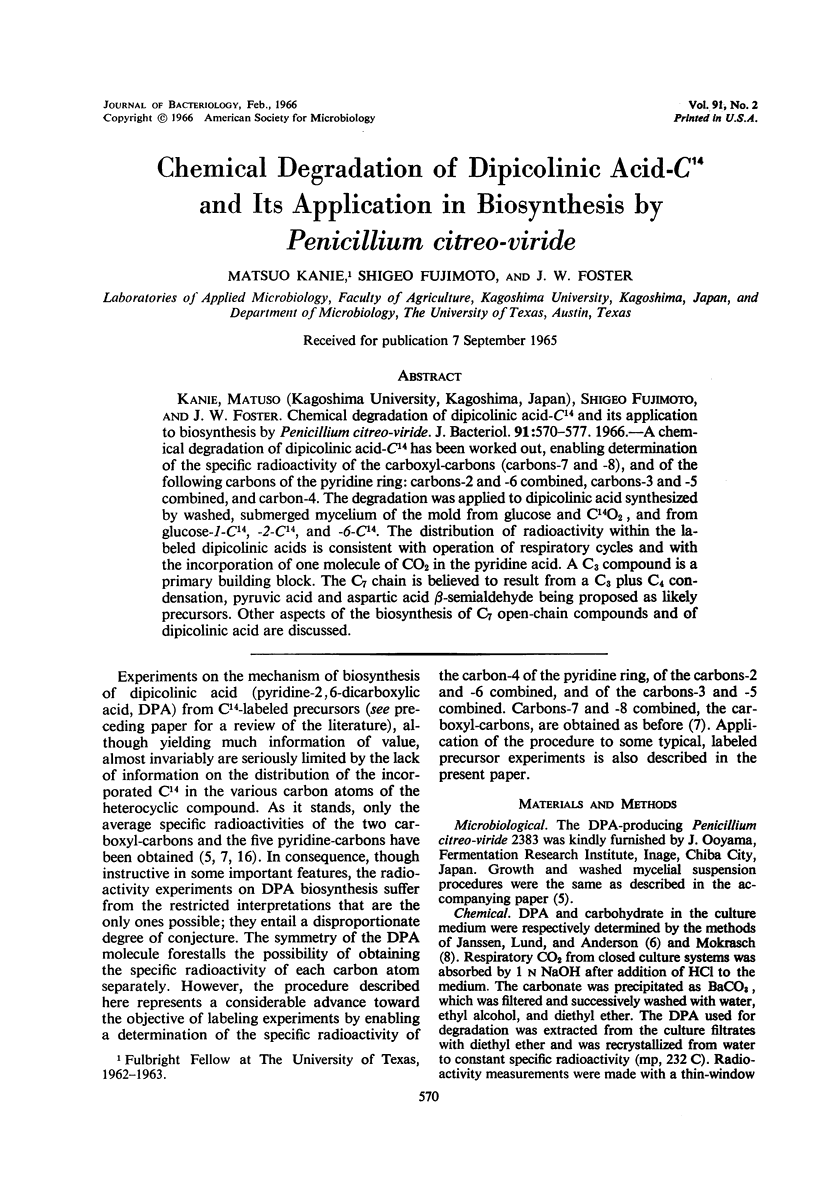
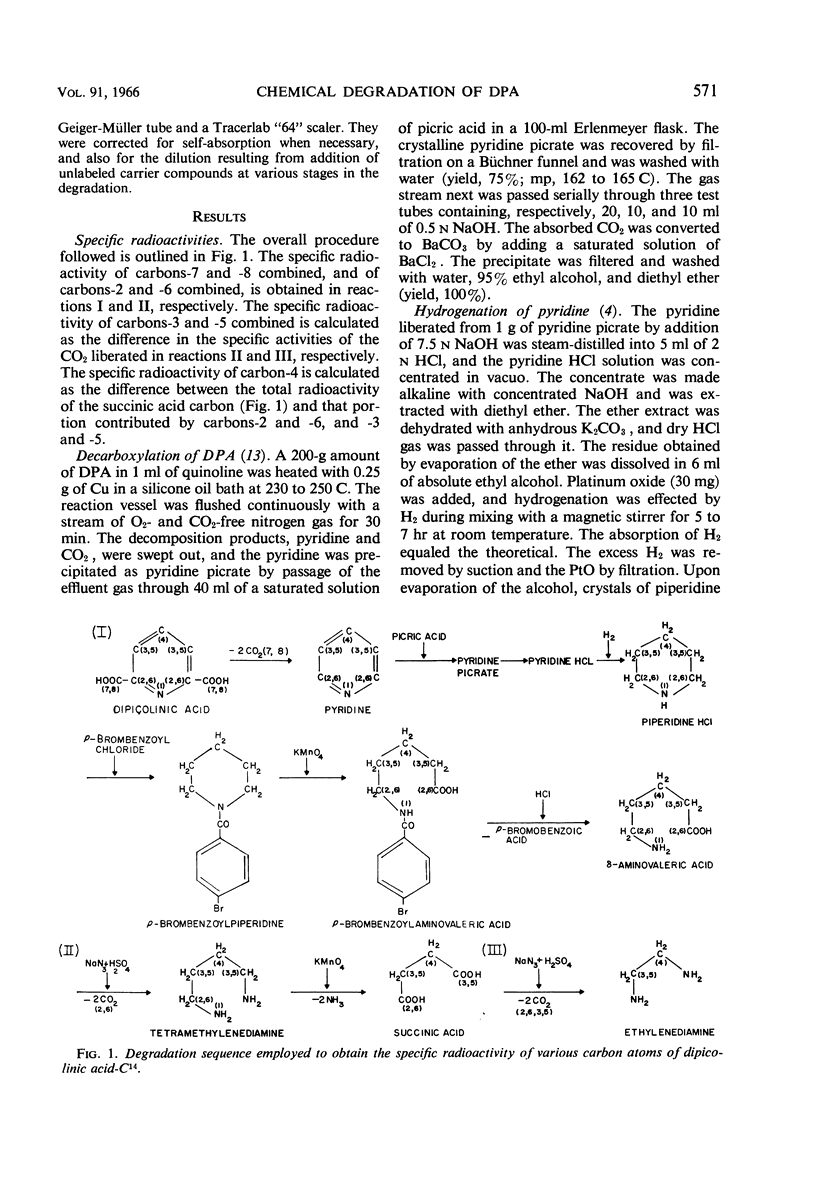
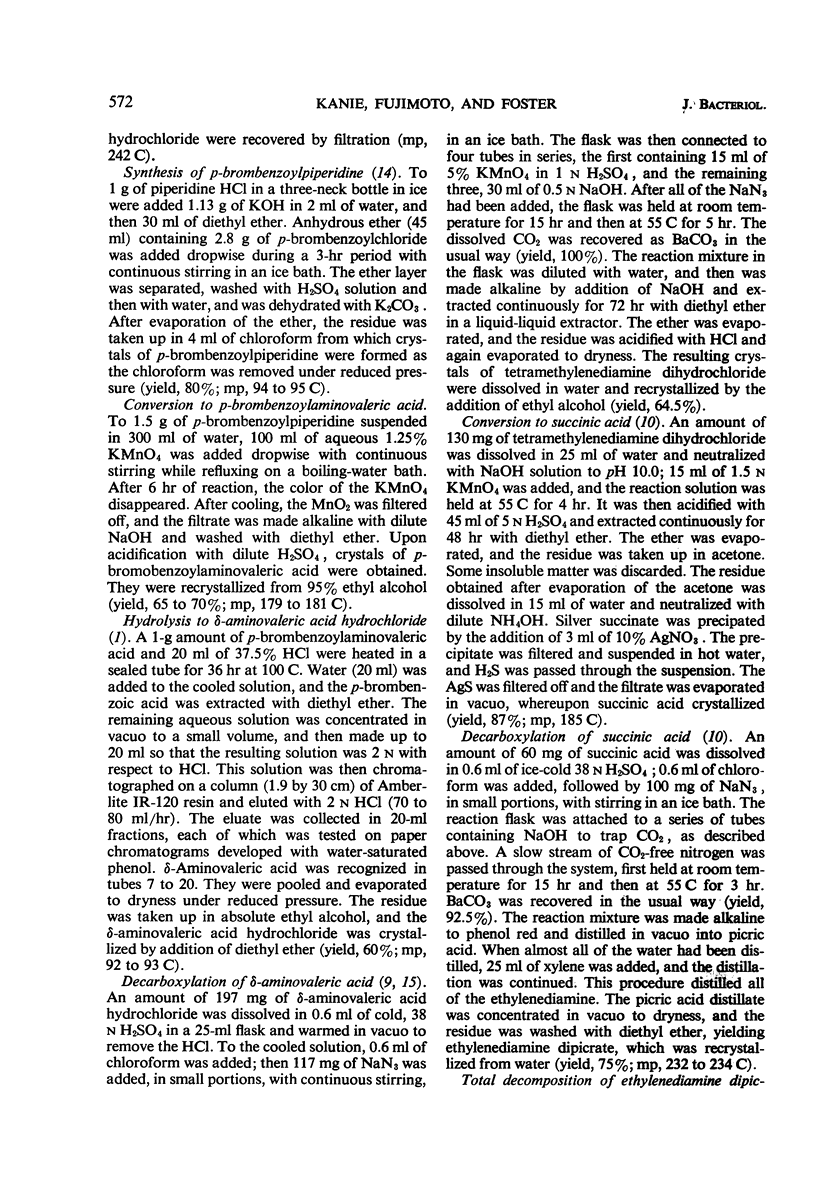
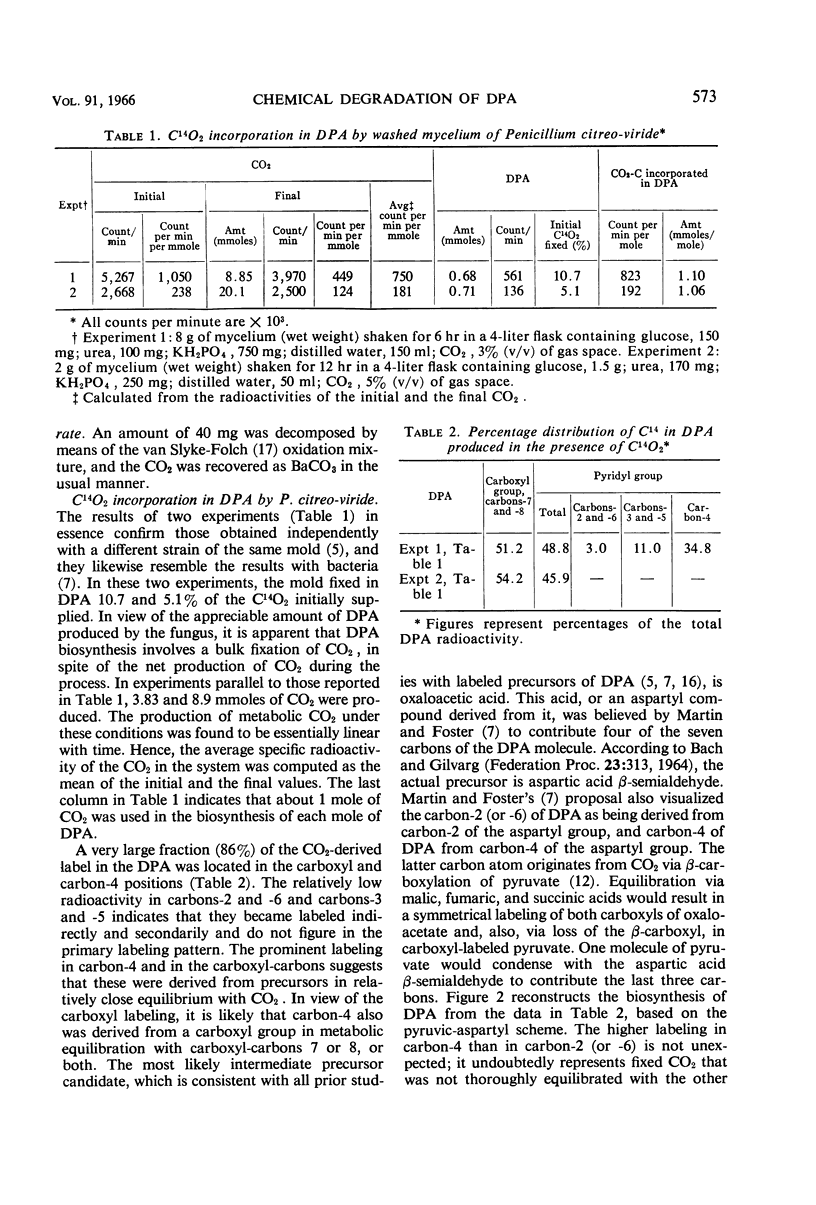
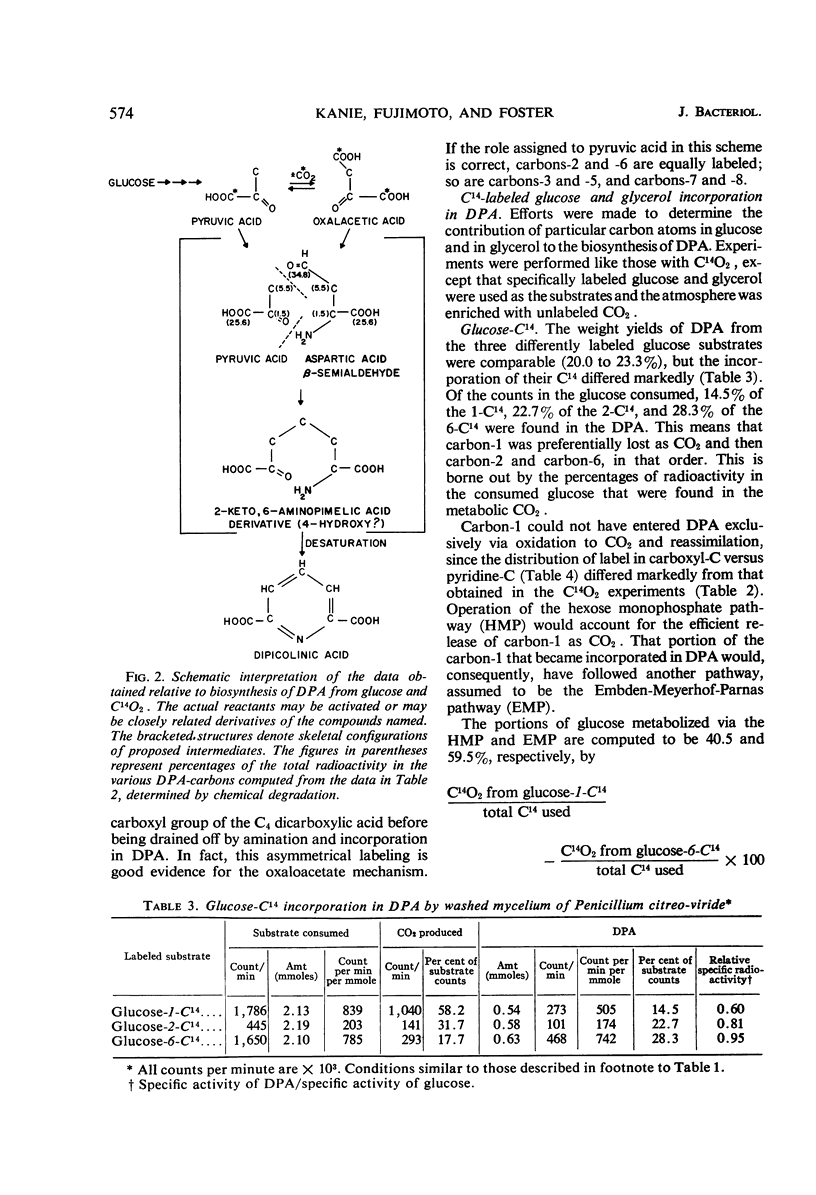
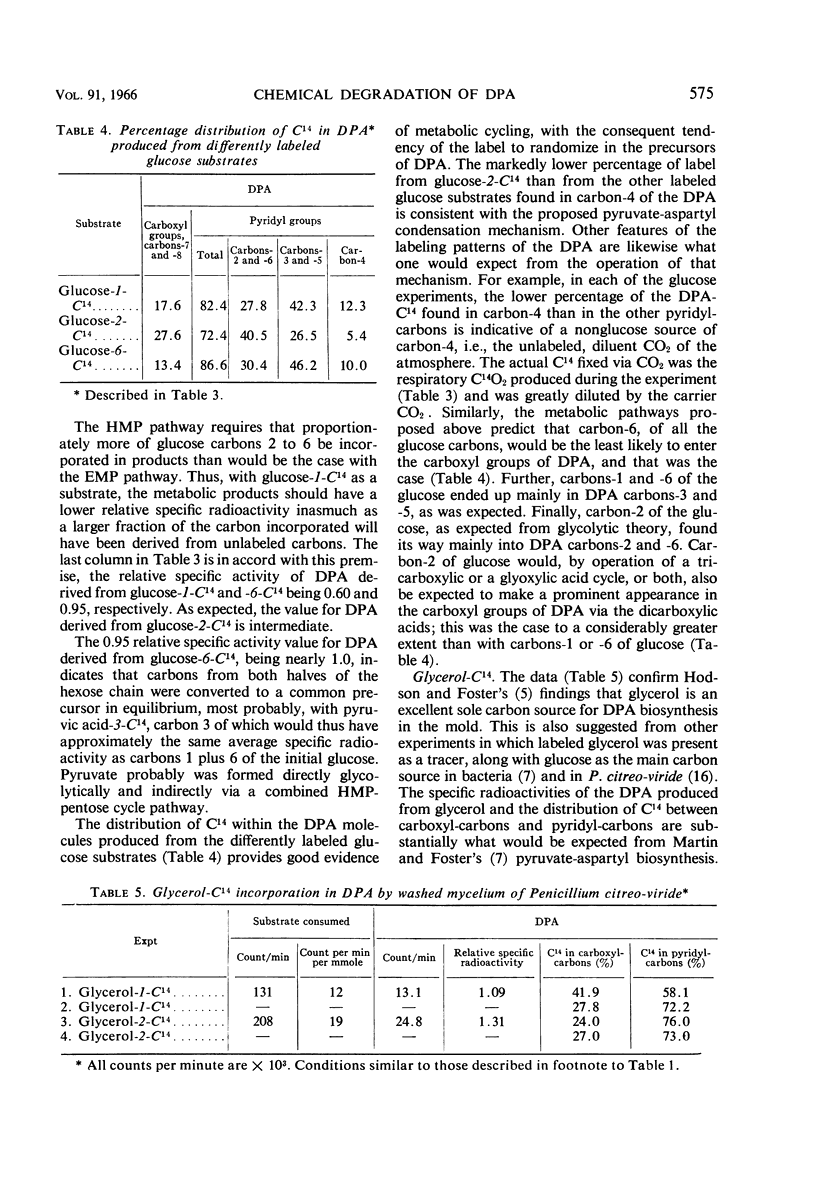
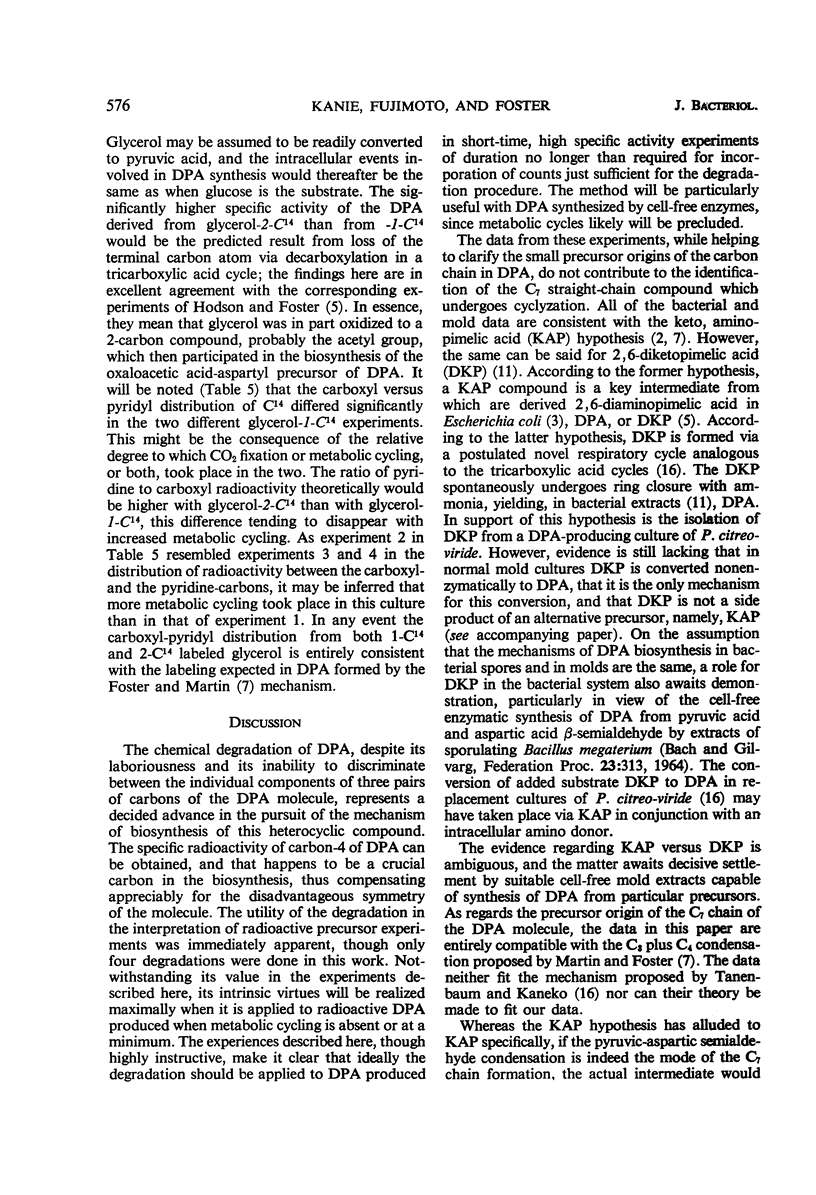
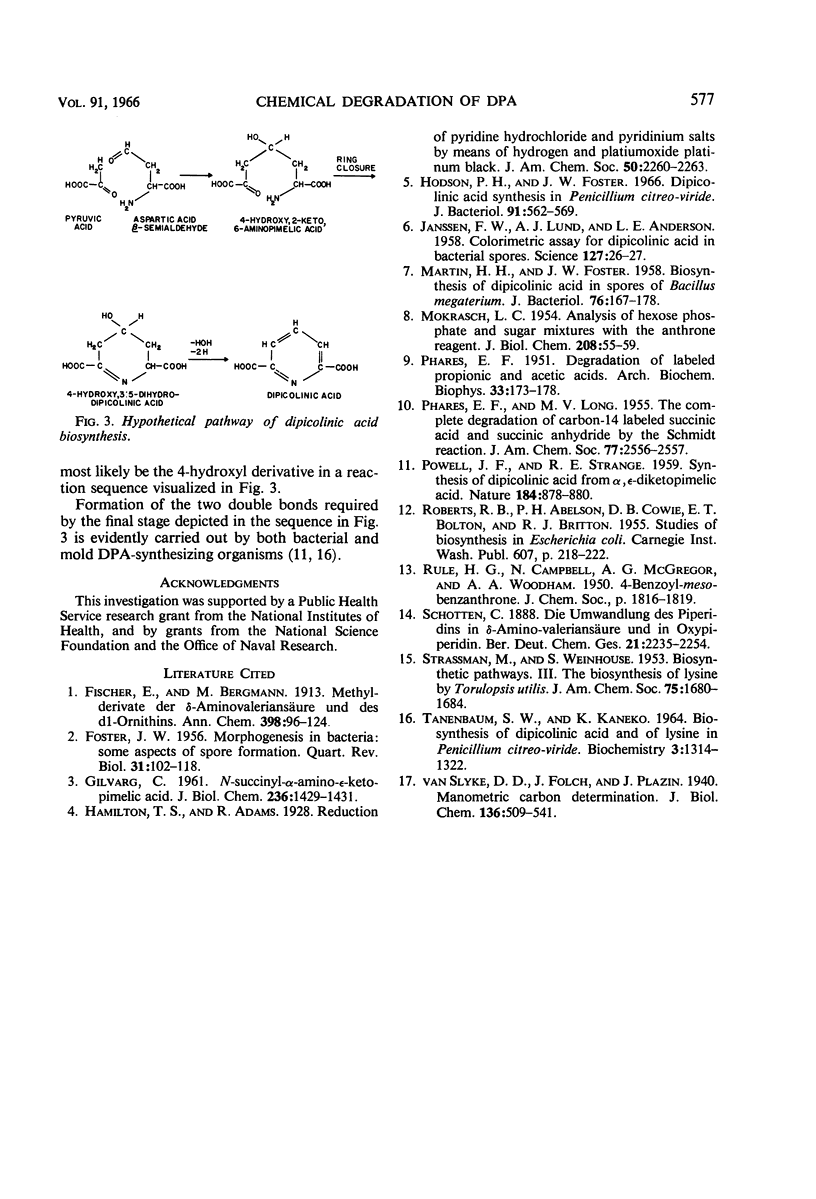
Selected References
These references are in PubMed. This may not be the complete list of references from this article.
- FOSTER J. W. Morphogenesis in bacteria: some aspects of spore formation. Q Rev Biol. 1956 Jun;31(2):102–118. doi: 10.1086/401259. [DOI] [PubMed] [Google Scholar]
- GILVARG C. N-Succinyl-alpha-amino-6-ketopimelic acid. J Biol Chem. 1961 May;236:1429–1431. [PubMed] [Google Scholar]
- Hodson P. H., Foster J. W. Dipicolinic acid synthesis in Penicillium citreo-viride. J Bacteriol. 1966 Feb;91(2):562–569. doi: 10.1128/jb.91.2.562-569.1966. [DOI] [PMC free article] [PubMed] [Google Scholar]
- JANSSEN F. W., LUND A. J., ANDERSON L. E. Colorimetric assay for dipicolinic acid in bacterial spores. Science. 1958 Jan 3;127(3288):26–27. doi: 10.1126/science.127.3288.26. [DOI] [PubMed] [Google Scholar]
- MARTIN H. H., FOSTER J. W. Biosynthesis of dipicolinic acid in Bacillus megaterium. J Bacteriol. 1958 Aug;76(2):167–178. doi: 10.1128/jb.76.2.167-178.1958. [DOI] [PMC free article] [PubMed] [Google Scholar]
- MOKRASCH L. C. Analysis of hexose phosphates and sugar mixtures with the anthrone reagent. J Biol Chem. 1954 May;208(1):55–59. [PubMed] [Google Scholar]
- PHARES E. F. Degradation of labeled propionic and acetic acids. Arch Biochem Biophys. 1951 Sep;33(2):173–178. doi: 10.1016/0003-9861(51)90094-x. [DOI] [PubMed] [Google Scholar]
- POWELL J. F., STRANGE R. E. Synthesis of dipicolinic acid from 2,6-diketopimelic acid. Nature. 1959 Sep 19;184:878–880. doi: 10.1038/184878a0. [DOI] [PubMed] [Google Scholar]
- TANENBAUM S. W., KANEKO K. BIOSYNTHESIS OF DIPICOLINIC ACID AND OF LYSINE IN PENICILLIUM CITREO-VIRIDE. Biochemistry. 1964 Sep;3:1314–1322. doi: 10.1021/bi00897a022. [DOI] [PubMed] [Google Scholar]


